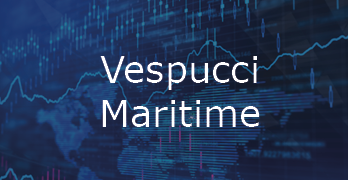FBX Index: The pace of decline increases

August is typically an element of the strongest part of peak season, yet 2022 does not have any material peak season. As a consequence, the slide in spot rates not only continued, but the pace of the decline also increased.
The available data in the market shows that fundamental support for very high freight rates has now fully disappeared and further weakening going forward is to be anticipated.
The available data in the market shows that fundamental support for very high freight rates has now fully disappeared and further weakening going forward is to be anticipated.
An analysis of the relation between nominal vessel utilization on the major deep-sea trades and the spot rates shows that at a specific threshold utilization, the pricing curve becomes almost vertical. This is the point where there is physically no more capacity at all whilst there is excess demand in the market. The data shows that it is at this point spot rates go to the historical highs we have seen over the past 18 months.
For the Transpacific this threshold is in the range of 91%-95%. The latest data now shows that trade has been at 90% or below for three consecutive months. For Asia-Europe the threshold is approximately 85%, but the utilization has been at 81% or blow for five consecutive months.
This means that there is no structural support for the pricing dynamic where insufficient demand leads customers to overbid on pricing to ensure available space on the vessels.
The newest data from July 2022 shows that delays have gradually improved since January. We are now at a point where 9.3% of the global fleet is effectively unavailable. Under normal market conditions, 2% of the global fleet is unavailable due to delays. This has the effect of releasing additional capacity into the global market, in turn increasing capacity at the same time where global container demand is declining slightly.
From a global perspective the bottleneck problems are slowly easing. The worst was seen in January 2022 where 13.8% of the global fleet capacity was unavailable due to delays. The newest data from July 2022 shows that delays have gradually improved since January. We are now at a point where 9.3% of the global fleet is effectively unavailable. Under normal market conditions 2% of the global fleet is unavailable due to delays. This has the effect of releasing additional capacity into the global market, in turn increasing capacity at the same time where global container demand is declining slightly.
This release of capacity due to easing of the bottlenecks also leads to a reduction in blank sailings. “Blank sailings” is the term used for the ad-hoc cancellation of an otherwise scheduled sailing. In early 2020 carriers used this to lower capacity in a situation of sharply dropping demand. From Q3 2020 until now blank sailings happen because the carriers quite simply do not have sufficient vessels to cover their planned sailings because the vessels are caught up in the delays.
The improvement in delays can also be seen in the data for blank sailings. The weekly number of blank sailings tend to be somewhat volatile. However, there is an underlying and very clear trend. Looking at the Pacific and Asia-Europe trades in combination, an increasing trend happened from the beginning of 2021 and ended in January 2022. At the onset of this the average was around 10 blank sailings per week, and at the apex in January 2022 this was at 30 blank sailings. A declining trend has then commenced and as per August 2022 the trend is now down to 20 blank sailings per week.
All in all, the underlying structural data in the market clearly support the notion that there is no longer a global physical shortage of vessel capacity, and as such there is no support for the historically high rates.
All in all, the underlying structural data in the market clearly support the notion that there is no longer a global physical shortage of vessel capacity, and as such there is no support for the historically high rates. Even though small bumps in the road in the form of a sudden short demand spike - or unexpected bottlenecks - could cause temporary upwards rate movement, the overall rate development will continue downwards towards more normal market levels.
About Lars Jensen, CEO, Vespucci Maritime
Lars is a leading expert and thought leader in analyzing global container shipping markets. Lars has 19 years’ experience hereof the last nine within multiple companies he has founded, with the main focus as CEO of Vespucci Maritime.
Receive monthly container market reports direct to your inbox.